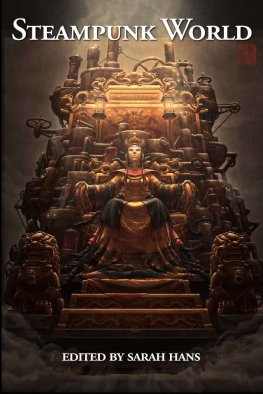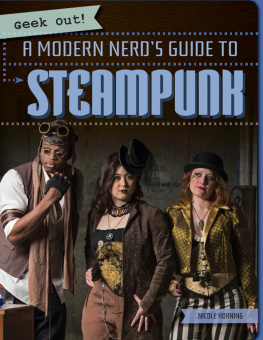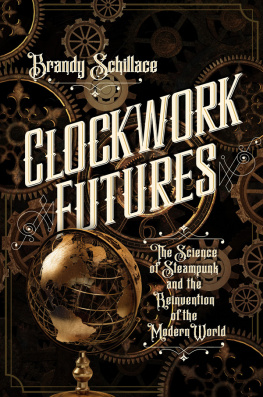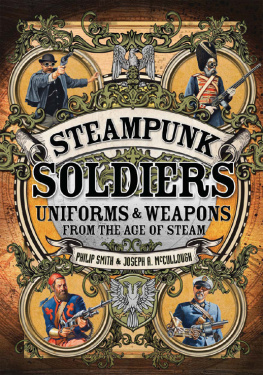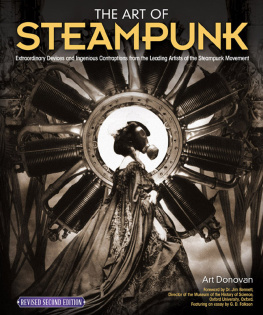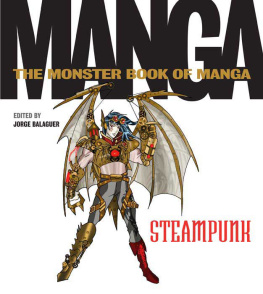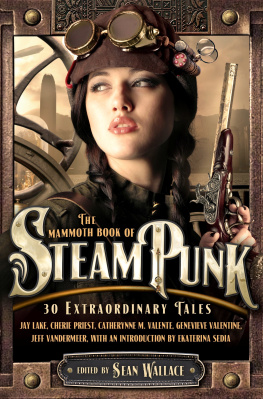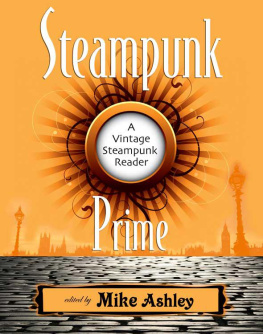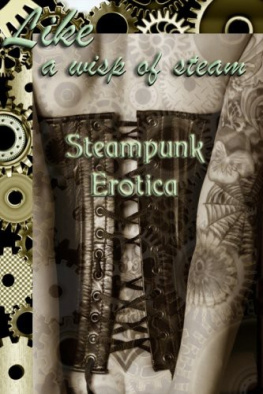Edited by Sarah Hans

To the Airship Archon, the best bunch of piratesprivateers friends a girl can have the privilege of knowing.
Introduction: Going Global, or Re-Engineering Steampunk Fiction
Diana M. Pho
Steampunk fiction has traveled a long way. Chronologically, steampunks inspiration stems from the classic scientific romances and dime novels of the 19th century. Manifestations of proto-steampunk fiction existed, usually pastiches and re-interpretations of classic Victorian novels. One of the first early examples of modern steampunk was Michael Moorcocks Nomad of the Time Streams trilogy, written in the 1970s. This type of fiction became anointed as steampunk in 1987, when K.W. Jeter wrote in his now famous letter to Locus magazine: Personally, I think Victorian fantasies are going to be the next big thing, as long as we can come up with a fitting collective termSomething based on the appropriate technology of that era; like steampunks, perhaps.
Jeters Morlock Night and books from his fellow writers Tim Powers (The Anubis Gates) and James Blaylock (Homunculus) are considered the founding texts of the modern steampunk genre. Later books have become game-changers in steampunk fiction, each one marking a new turn in the genre. William Gibson & Bruce Sterlings The Difference Engine stamped the punk into steampunk with its subversive, gritty take on how computing technology can change the industrial age in the West. Cherie Priests Clockwork Century series, beginning with Boneshaker, took the science fiction community by storm, introducing steampunk that isnt limited to Victorian England and highlighting how people across race, class, gender, and sexuality also had stories in history worthy of being told. The fiction anthologies by Ann and Jeff VanderMeer gathered both classic and modern takes on steampunk together, and their latest volume dares to ask whether steampunk fiction can become a revolutionary act. Now in your hands you hold another book that seeks to impact steampunk fiction by asking: Where does steampunk happen?
Not in England. Not in the United States. Not anymore.
But before the where can be further discussed, there have been many debates on defining steampunk that must be acknowledged. Jess Nevinss early writings on steampunk point to its 19th century literature roots in Edisonades, the boy-genius pulp fiction adventures. Offering another argument, literature scholar Mike Perschon argues that steampunk is an aesthetic based on neo-Victorian retrofuturistic technofantasy. Fellow professor Dru Pagliassotti suggests that there is a difference between steampunk stories which highlight subversion, rebellion, and marginalized underdog protagonists, and steampulp ones which contain the 19th century milieu and adventure, minus the politics.
Let me propose another idea. Steampunk has been thought of as being undefinable because of the range of elements it actually includes, but I think in some sense, steampunk has become synonymous with an emergent idea in todays fictionthe cross-genre. No more can stories be contained into one category; now, they jump across many. Nothing is simply steampunk after all it is steampunk and alternate history, or mystery, or romance, or horror, or what-have-you. This idea isnt coming strictly from an academic angle if it was, Id also mention the role of postmodernism and include a whole lot of citations. As a publishing professional, I also think that cross-genre is a tricky catch-all gambit that can make books fly off the shelves like hotcakes or be stuck in the clearance bin because no one knows exactly how to sell it. But that is also the miracle explanation of how cross-genre works, because everyone can find something they like about a book of that kind. Steampunk fiction as a cross-genre explains its rising popularity in pop culture: because it acts as a wide-appealing topical idea that tailors itself to the individual interests of the steampunk fan. We know that steampunk style can span all media forms video games, films, books, music, fashion. The subject can work as a building block for online communities and offline maker spaces. It can be as high-minded as historiographical discourses on neo-Victorianism or as lowbrow as that trendy new porn site.
By categorizing steampunk as cross-genre, what happens when we take one aspect commonly seen in steampunk and cross it out entirely? In this case, how can steampunk stories be told outside of that western geographical cage?
The answer is straight from a tinkers DIY manual: by however they work.
The tales that Sarah Hans has selected for Steampunk World incorporate steampunks biggest thematic idea into non-Western backdrops: namely, the impact of industrialization. More than a simple exercise of imagination, then, steampunk fiction from a global perspective can be a deep exploration of cultural and historical issues: encroaching westernization, economic upheaval, shifting gender roles, prejudices concerning race and nationality, the impact of imperialism and war. Plus, as much as steampunk fiction loves dealing with the past (or alternate pasts), Steampunk World also contributes to the conversation about the future of speculative fiction: how is genre fiction becoming more divergent in a globalizing culture?
This anthology touches upon all of these questions. And its a fun read to boot!
For example, high adventures unfold through rebellion and exploration. In Nisi Shawls Promised, an American soldier in the Congo witnesses something otherworldly while fighting as part of the African rebellion against Belgian rule. Another warrior confronts a demon determined to retrieve an object stolen from him in Balogun Ojetades The Hand of Sa-Seti. A transplanted scholar travels from his home in Constantinople to the desert in search of a lost treasure in One Thousand and One Pieces from Lucien Soulban. In The Leviathan of Trincomalee, by Lucy A. Snyder, a brave and intelligent young girl goes on a quest with her father to hunt a mysterious ocean beast.
Oftentimes, these tales root for the underdog as they triumph over unlikely odds because of their wit and fighting spirit. Malon Edwardss Mary Sundown and the Clockmakers Children recounts a David versus Goliath battle between a clockwork sprinter and an enemy of titanic proportions in an alternate Chicago. An enigmatic inventor falls from the sky and saves a Yoruba village in Tade Thompsons Budo Or, The Flying Orchid. S.J. Chamberss trapped protagonist in The ehrazatn Diyoramas Tour has the last laugh and gives a European tour group an unexpected surprise. The Construct Also Dreams of Flight from Rochita Loenen-Ruiz is a subtly-told tale about a small household in the Philippines and the secrets its inhabitants hold. The Omai Gods by Alex Bledsoe squares off a gang of fleeing Chinese rebels against the South Pacific Islanders they attempt to subdue. One young Jewish woman must decide whether to make her dreams a reality in Lillian Cohen-Moores Hatavat Chalom. Indrapramit Dass The Little Begum features a pair of sisters living in India, and the plans for freedom they hatch together.
From these dynamically-changing worlds come the birthing pains of a new era. Old traditions give way and new boundaries are formed that affect even the most mundane of lives. Two migrant workers cope with changes in their romantic relationship in Jaymee Gohs Hidden Strength. A government agents cultural heritage becomes unexpectedly relevant to her latest investigation in Pip Ballantines Tangi A Te Ruru / The Cry of the Morepork. Russian noble sisters confront a new world, post-Revolution, in Emily Cataneos The Firebird. Nayad A. Monroes Incan inventor evades political subterfuge in The Emperor Everlasting. Benjanun Sriduangkaew presents a radical re-telling of The King and I from the perspective of a Thai automaton builder in The Governess and We. Ken Lius Good Hunting tells the struggles of a demon hunter and a fox spirit in a world that stops believing in them both. Steampunk even takes a mythological turn in Jake Lakes Shedding Skin; Or How the World Came to Be.

